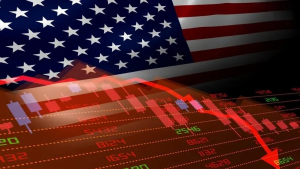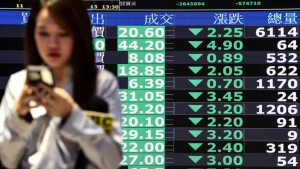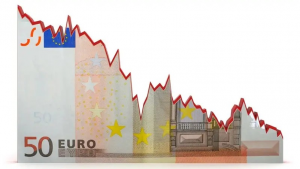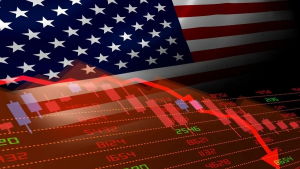The U.S. dollar fell Monday amid heightened fears of a U.S. recession and global economic disruptions from the Trump administration’s trade tariffs.
At 05:30 ET (09:30 GMT), the Dollar Index, which tracks the greenback against a basket of six other currencies, dropped 0.2% to 102.600, after sliding to a six-month low last week, before recovering partly.
Dollar suffers on recession fears
The greenback retreated further Monday after U.S. President Donald Trump doubled down on his trade policies, saying on Sunday that his tariffs were the only means to “cure” massive financial deficits with the likes of China and the European Union, and that they were here to stay.
Concerns are growing that this trade war will hit global economic activity, including in the world’s largest economy, and Goldman Sachs has lifted its odds of a 2025 recession to 45% from 35% a week ago, after hiking its recession forecast last week.
“The ongoing carnage in equity markets continues to favour defensive positioning,” said analysts at ING, in a note. “Liquidity is important here, but so is the balance of payments picture in that your country does not want to be heavily dependent on foreign capital. Here, the dollar gets marked down on its 4% current account deficit and the view that foreign investors will pull capital or certainly raise FX hedge ratios on longer-term/stickier investments in the U.S.”
The turmoil is also seen putting pressure on the Federal Reserve to cut interest rates more aggressively this year than had been expected to the start of 2025.
“The market now prices 110bp of Fed cuts this year and a low point for the easing cycle down at 3.00% next year. In a speech on Friday,” ING added.
European leaders look to retaliate
In Europe, EUR/USD traded 0.2% higher to 1.0976, with the single currency benefiting from the dollar weakness, after it had handed back some of the previous week’s strong gains.
“Supporting factors for the euro are its role as a liquid alternative to the dollar and the fact that the euro runs a 3% current account surplus. Standing against the euro is the eurozone being an open, trade-driven economy,” added ING.
Data released earlier Monday showed that German industrial production fell more than expected in February, by 1.3% compared to the previous month, instead of 0.9% decline predicted.
However, most interest this week will be what the Europeans do when it comes to retaliation, with policy makers meeting in Luxembourg today.
“From the sounds of it, Europe is going to be far more cautious and selective than the blunt 34% reciprocal tariff announced by China on Friday,” ING added.
GBP/USD traded 0.3% lower to 1.2855, retreating after climbing to its highest level since October at the end of last week.
Yen climbs to six-month high vs dollar
In Asia, USD/JPY traded 0.7% lower to 145.89, falling to a six-month low on increased safe haven demand for the yen.
The Japanese currency was also buoyed by strong wage data, which increases the odds of an interest rate hike by the Bank of Japan in the near future.
USD/CNY traded 0.4% higher to 7.3121, to its highest level in just over three months on Monday as the Chinese markets returned following Friday’s holiday.
China was among the worst-hit by Trump’s tariffs, and is now facing a 54% cumulative tariff on its exports to the U.S,. prompting Beijing to retaliate with the imposition of 34% duty on U.S. goods.
AUD/USD slumped 0.8% to 0.5991, with the risk sensitive Aussie dollar, which often acts as a liquid proxy for the yuan, hit hard.
Australian Treasurer Jim Chalmers warned that the economy could be impacted by the U.S. tariffs due to its exposure to China, and that he expected many more interest rate cuts from the Reserve Bank of Australia this year.












